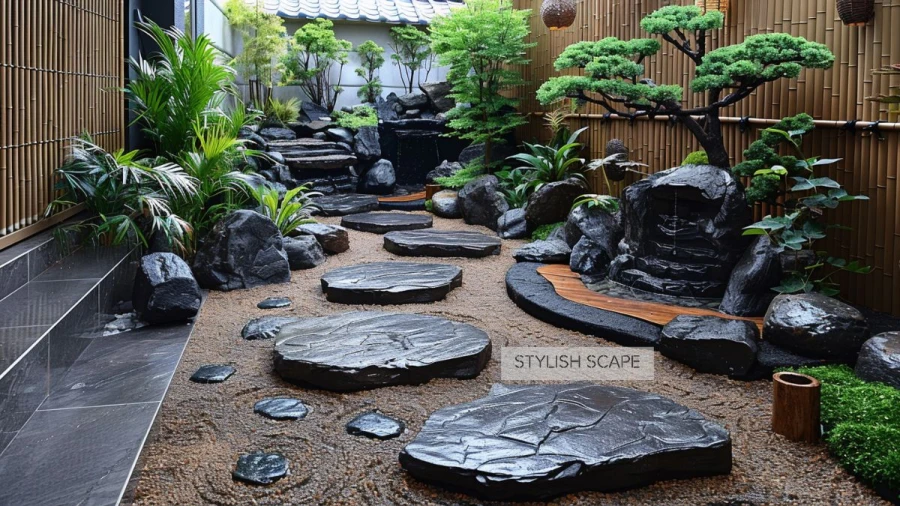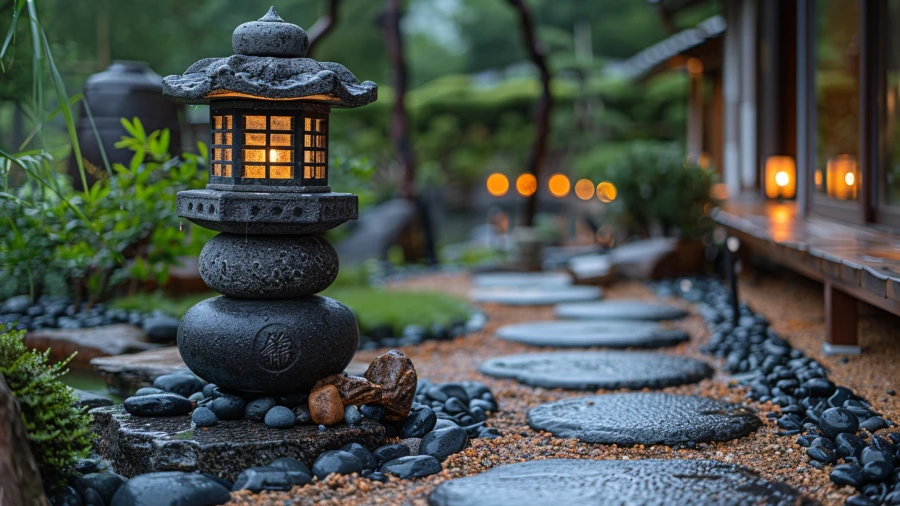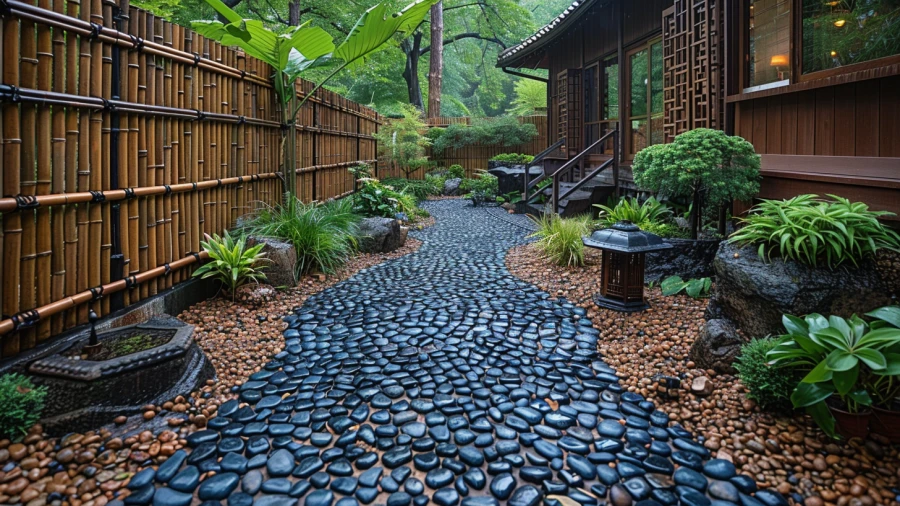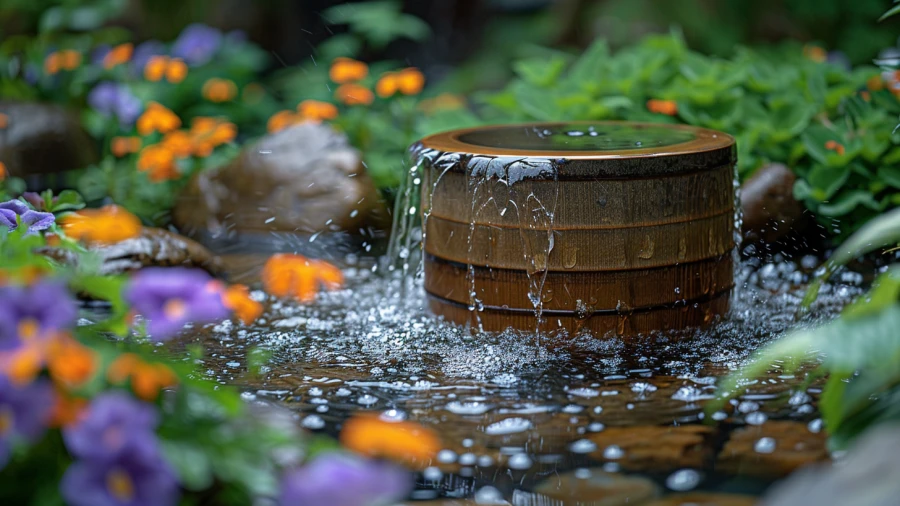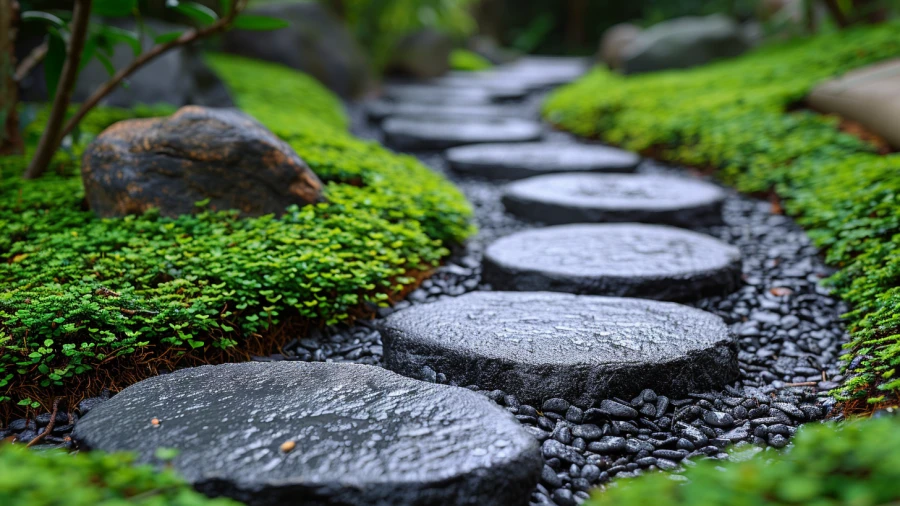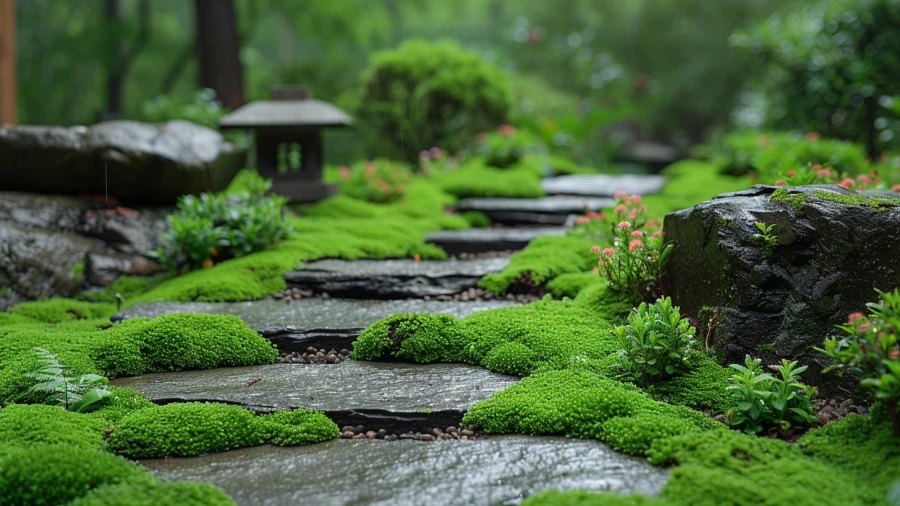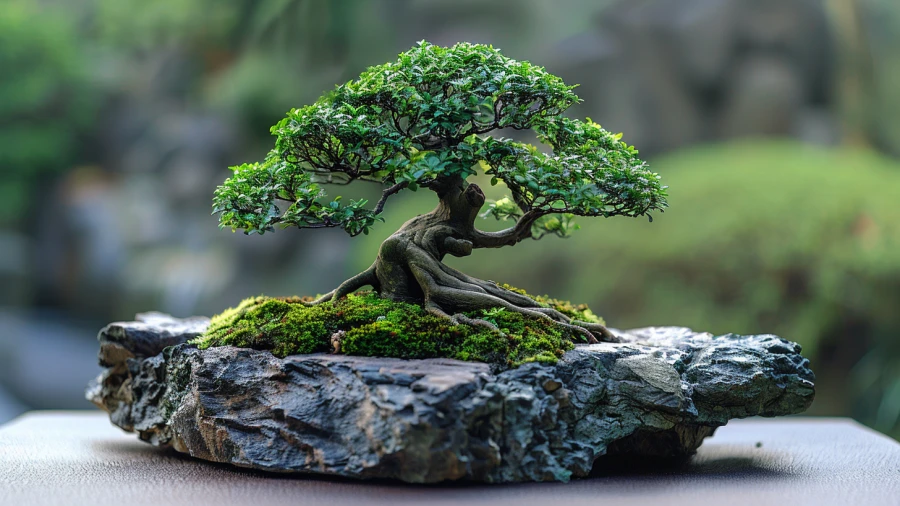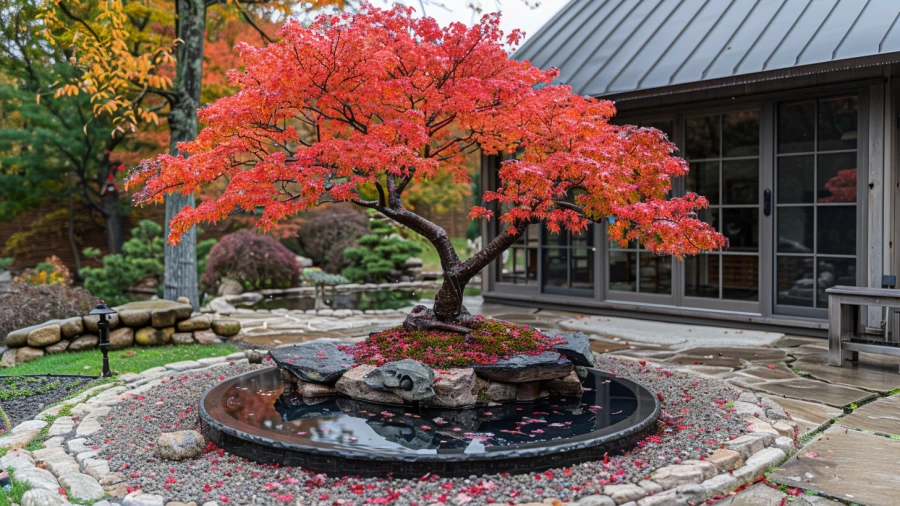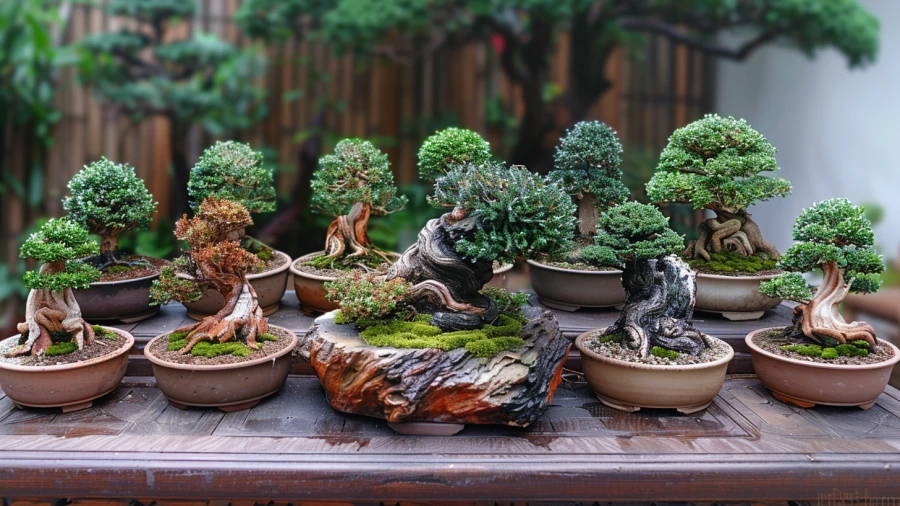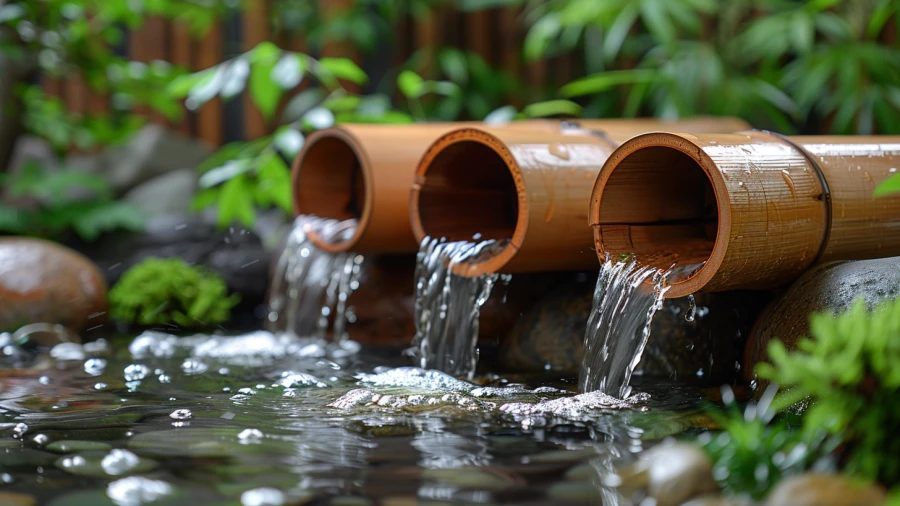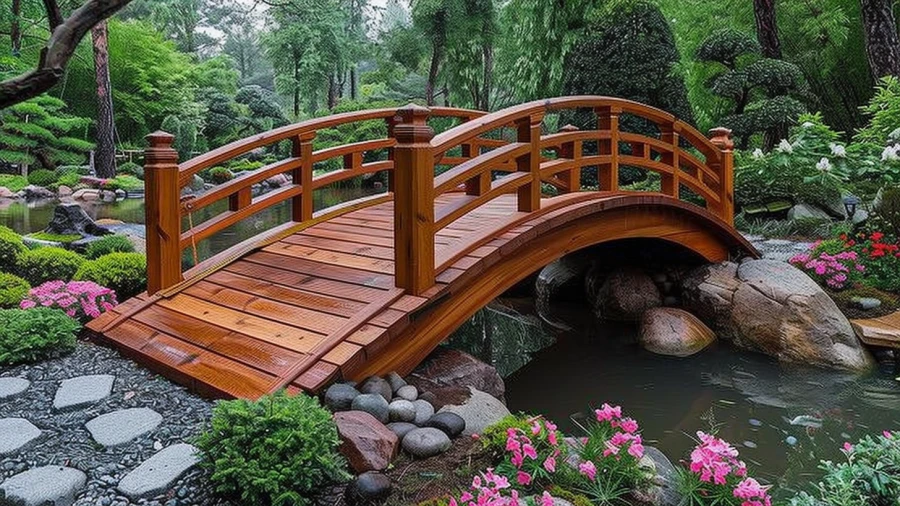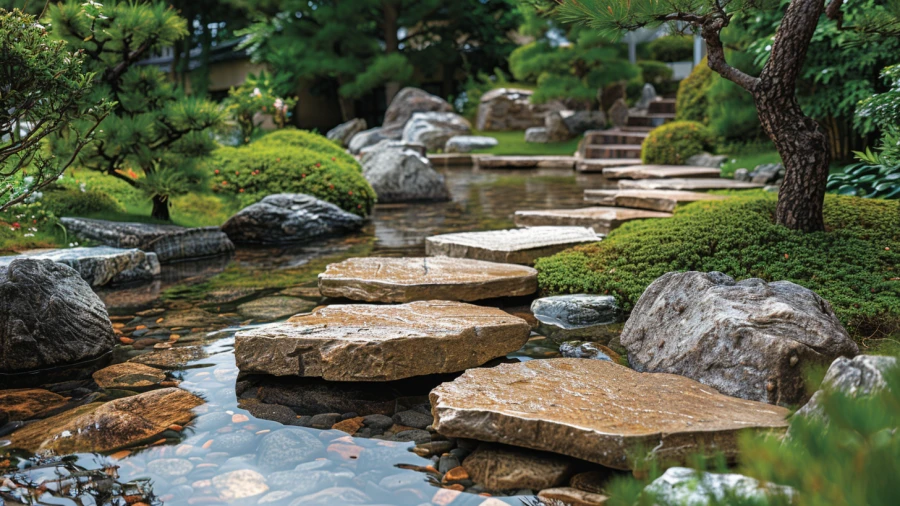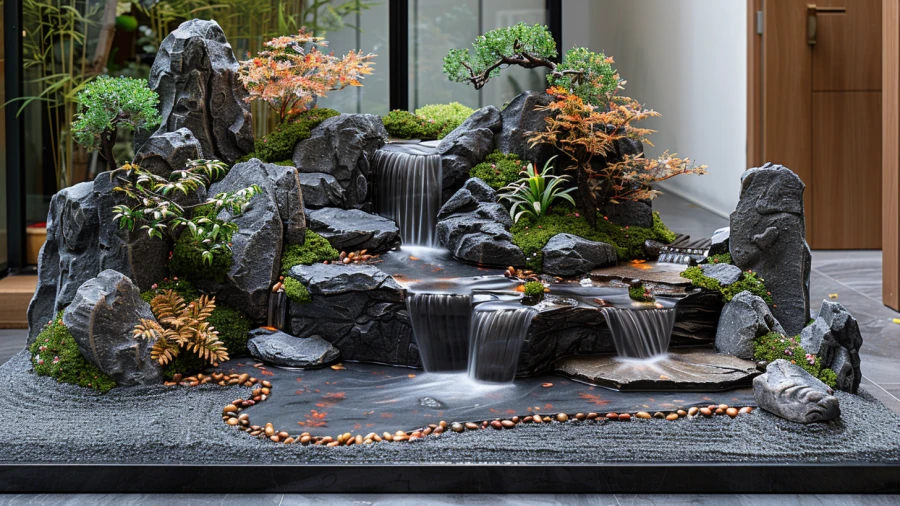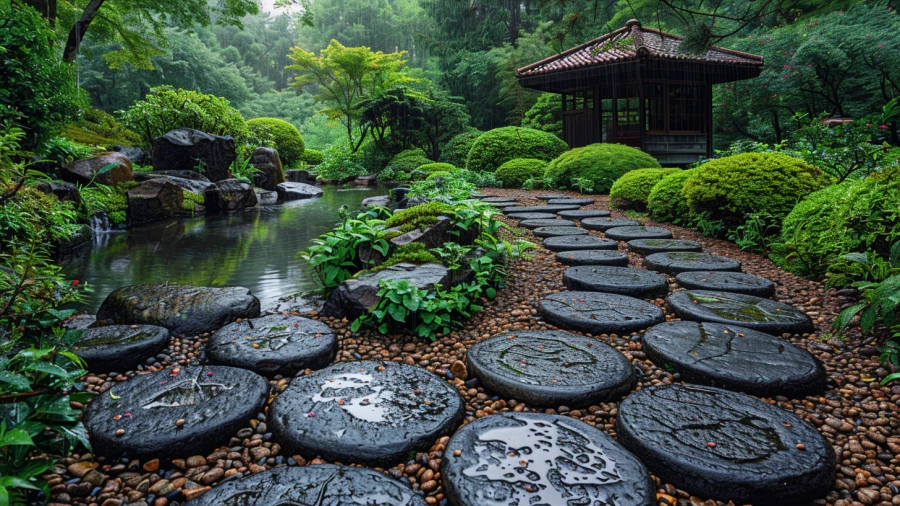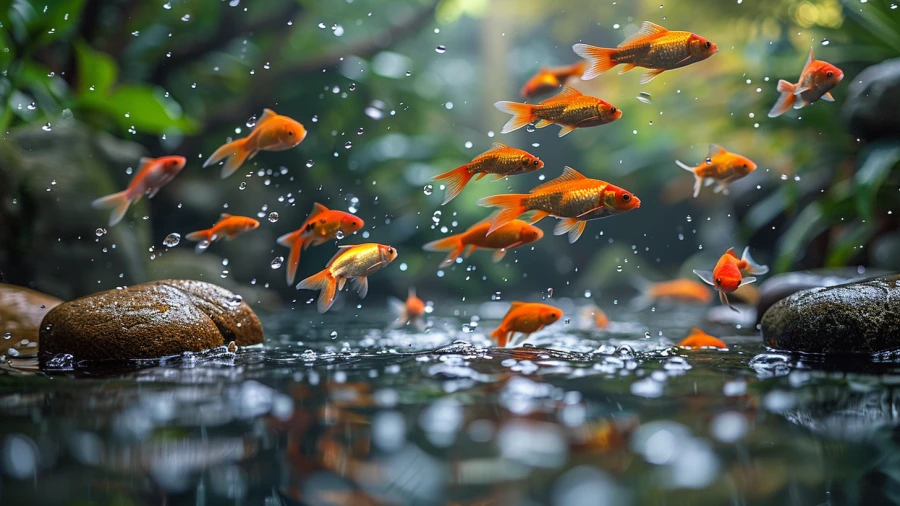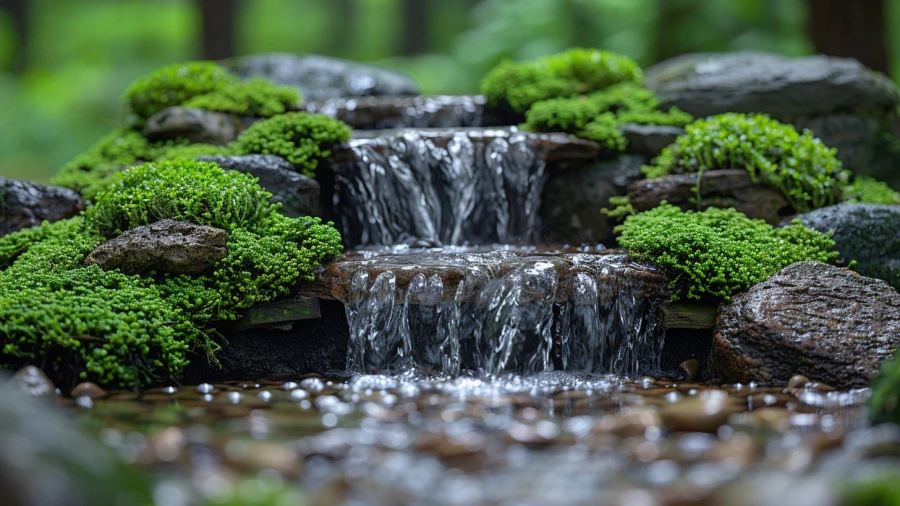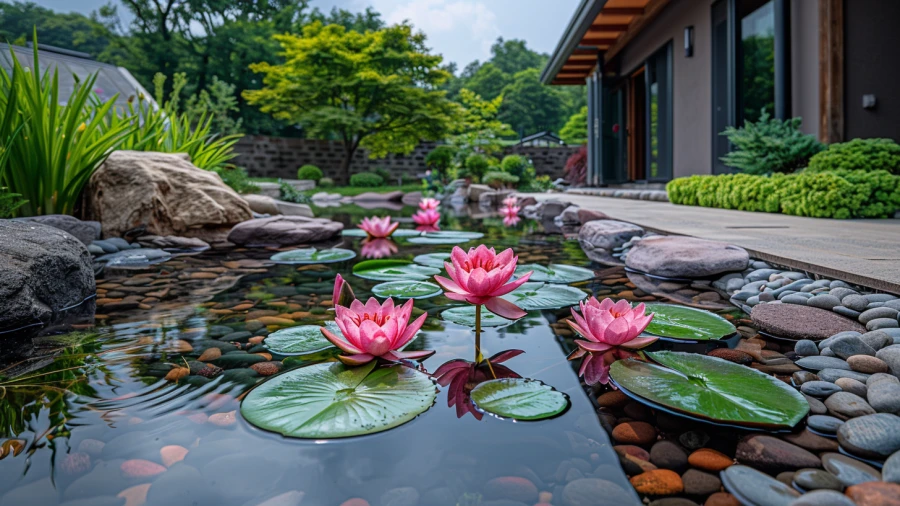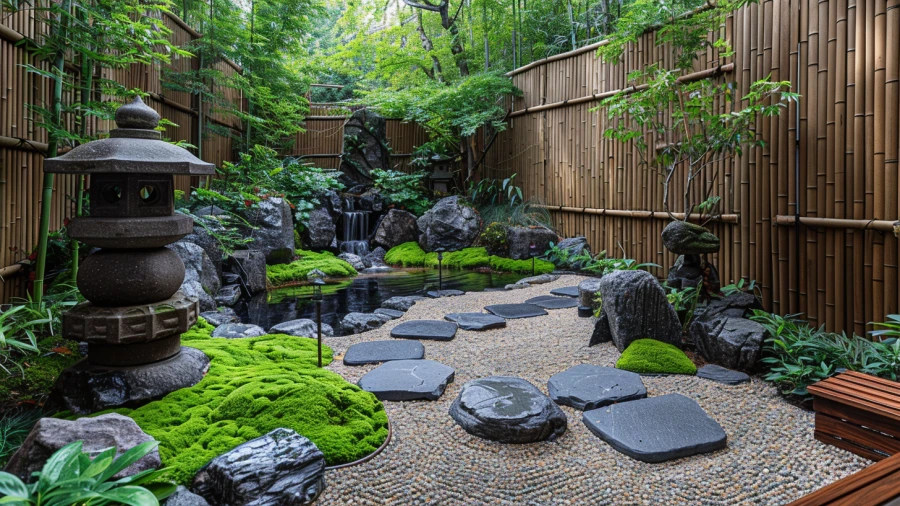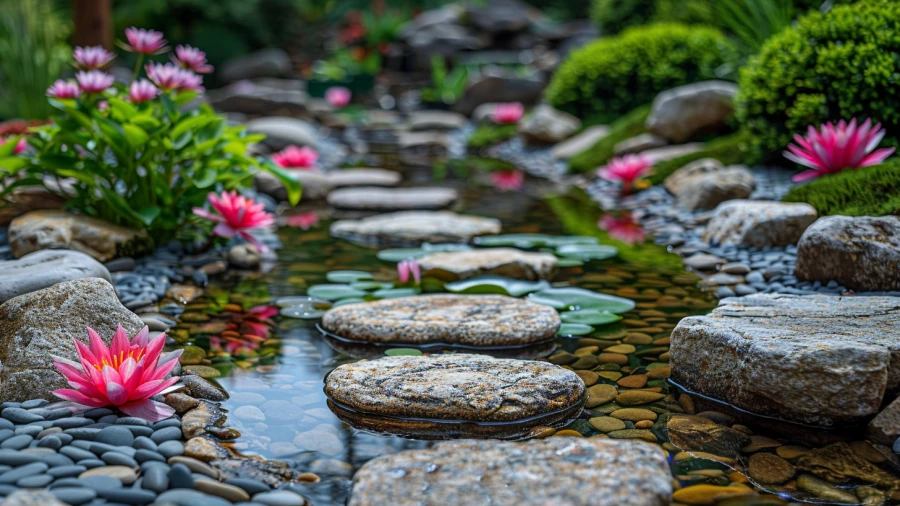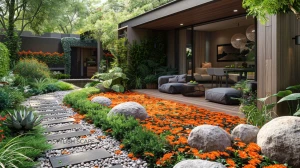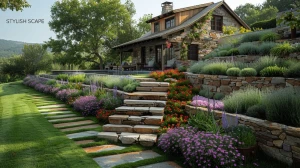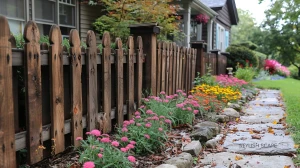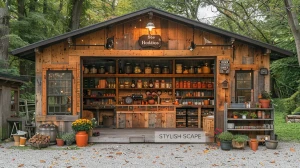
20 Small Japanese Garden Ideas for Creating Tranquil Urban Sanctuaries
Discover enchanting Small Japanese Garden Ideas where tranquility meets artistry. Explore serene landscapes with bonsai trees and water features. Perfect for urban sanctuaries or peaceful backyard retreats, each Small Japanese Garden Ideas embodies harmony and natural beauty.
by B Kishwar
Updated Jul 12, 2024
On This Page
- Small Japanese Garden Ideas
- Miniature Stone Lanterns
- Bamboo Fence
- Water Feature
- Stepping Stones
- Moss Garden
- Bonsai Trees
- Sand Patterns
- Stone Basin (Tsukubai)
- Japanese Maple
- Plant and Grow Bonsais
- Bamboo Water Fountain
- Wooden Bridge
- Natural Flagstone Path in the Garden
- Authentic Miniature Japanese Garden
- Stone Pavement Along the Garden
- Small Stream Full of Fishes
- Miniature Waterfall
- Water Lily Pond
- Japanese Style Courtyard
- Textured Pebbles for Your Pond
Small Japanese Garden Ideas
Small Japanese gardens are serene and harmonious outdoor spaces designed to bring peace and tranquility. These gardens typically feature minimalist landscapes with carefully placed rocks, gravel, water elements like ponds or streams, and symbolic plants such as bonsai trees and moss. Each element in a small Japanese garden is chosen and arranged to create a balanced and naturalistic environment that reflects the beauty of nature.
These gardens often incorporate the principles of Zen Buddhism, emphasizing simplicity, mindfulness, and the appreciation of natural beauty, making them perfect for relaxation and contemplation in compact urban or residential settings.
Miniature Stone Lanterns
Miniature stone lanterns are a classic feature in Japanese gardens, adding an element of tradition and tranquility. These small lanterns can be placed along pathways, near water features, or in secluded corners to create a serene atmosphere. Made from natural stone, they blend seamlessly with the garden's aesthetic. The soft light they emit at night adds a magical ambiance, highlighting the garden's beauty and enhancing the overall experience.
These lanterns also symbolize guidance and illumination, making them a meaningful addition. Their intricate designs and textures contribute to the garden's visual appeal, reflecting the artistry and craftsmanship of Japanese culture.
Bamboo Fence
A bamboo fence is a versatile and natural addition to a small Japanese garden, providing privacy and a sense of enclosure. Bamboo is a traditional material in Japanese landscaping, known for its durability and aesthetic appeal. A bamboo fence can be constructed in various styles, such as woven, panel, or rustic, each offering a unique look. It helps to define garden boundaries, support climbing plants, or act as a backdrop for other garden elements.
The natural texture and color of bamboo create a harmonious connection with the surrounding greenery. Moreover, bamboo fences are eco-friendly, easy to install, and require minimal maintenance, making them an ideal choice for enhancing garden design.
Water Feature
A water feature, such as a small pond, fountain, or bamboo water spout (shishi-odoshi), brings the soothing sound of water to a Japanese garden. This element adds a sense of calm and tranquility, creating a peaceful environment. Water features can attract birds and other wildlife, enhancing the garden's connection to nature. The gentle movement of water can also reflect light, adding a dynamic visual element.
In a small garden, even a modest water feature can have a significant impact, making the space feel more expansive and serene. Incorporating rocks, aquatic plants, and fish can further enhance the natural beauty and balance of the garden.
Stepping Stones
Stepping stones are an essential feature in Japanese gardens, leading visitors through the space while providing an air of elegance. They can be arranged in a number of ways to lead to different parts of the garden, such as a tea house, water feature, or quiet bench. The irregular shapes and natural materials of the stones lend a feeling of harmony to their surroundings.
Stepping stones safeguard the garden's delicate moss and ground cover by creating defined paths. They also promote a mindful and methodical pace, allowing visitors to fully experience the garden's beauty and tranquillity.
Moss Garden
A moss garden offers a thick, green carpet that imparts a sense of calm and timelessness to a Japanese garden. Moss grows in dark, wet areas and can cover rocks, ground, and tree roots, softening the scene and adding a rich, textured surface. It takes little upkeep, making it ideal for compact gardens.
Moss gardens represent simplicity and the passage of time, embracing the ideas of wabi-sabi, which sees beauty in imperfection and change. They also create a quiet backdrop for other garden components like stone lanterns, water features, and stepping stones, adding to the overall sense of harmony and balance.
Bonsai Trees
Bonsai trees are a beautiful and intricate addition to a small Japanese garden, reflecting the art of cultivating miniature trees that mimic the shape and scale of full-sized trees. These meticulously pruned and shaped trees symbolize harmony, patience, and nature. In a garden, bonsai trees can be displayed on pedestals or within dedicated sections, adding a focal point that draws the eye.
Their delicate forms and detailed foliage provide a sense of tranquility and contemplation. Bonsai trees also allow gardeners to engage in a meditative practice, as maintaining them requires careful attention and care. They represent the perfect balance between nature and human artistry.
Sand Patterns
Sand patterns are a central element of a Zen garden (Karesansui), symbolizing water or waves in a dry landscape. Using a rake, intricate patterns can be created in the sand or gravel, such as ripples, circles, or straight lines. These patterns encourage meditation and reflection, as the act of raking is a mindful and calming practice.
In a small Japanese garden, sand patterns add a minimalist and serene aesthetic, providing a visual contrast to rocks, plants, and other features. They also require low maintenance, making them ideal for those seeking a peaceful and contemplative space. Regularly changing the patterns can refresh the garden's appearance and offer new perspectives.
Stone Basin (Tsukubai)
A stone basin, or Tsukubai, is a traditional Japanese water feature used for ritual cleansing before a tea ceremony. In a small Japanese garden, it serves as both a functional and decorative element. Typically made of natural stone, the basin is filled with fresh water and often accompanied by a bamboo ladle. The gentle flow of water creates a soothing sound, enhancing the garden's tranquil atmosphere.
Tsukubai symbolizes purity and humility, encouraging a sense of mindfulness and respect. Its rustic appearance and natural materials blend seamlessly with other garden elements, such as moss, stones, and plants, adding to the overall harmony and balance of the space.
Japanese Maple
A Japanese maple (Acer palmatum) is a stunning addition to a small Japanese garden, known for its delicate, lacy leaves and vibrant seasonal colors. This tree offers visual interest throughout the year, with its foliage turning brilliant shades of red, orange, and yellow in the fall. Japanese maples come in various sizes and shapes, making them suitable for small spaces.
They can be planted as focal points, along pathways, or near water features. Their graceful form and fine-textured leaves create a sense of elegance and tranquility. Additionally, Japanese maples symbolize peace, beauty, and the changing seasons, enhancing the garden's overall aesthetic and cultural significance.
Plant and Grow Bonsais
Planting and growing bonsais in a tiny Japanese garden is a gratifying and beautiful experience. Bonsai gardening entails meticulous pruning, wiring, and sculpting to produce miniature trees that rival the majesty of their full-grown counterparts. These trees can be displayed on stands, tables, or incorporated into a garden setting.
Growing bonsais promotes patience and awareness since it takes consistent care and nurturing. The presence of bonsais in the garden adds a level of detail and sophistication, creating a living work of art that varies with the seasons. Bonsais represent harmony, balance, and the delicate interplay between nature and human care, which contributes to the garden's sense of tranquility and beauty.
Bamboo Water Fountain
Bamboo water fountains are a peaceful and traditional element in Japanese gardens, recognized for their soothing sound and natural appearance. Water slowly trickles into a basin or pond below, creating a relaxing scene. A bamboo fountain can be used as a focal point in a small Japanese garden, adding to the space's beauty and simplicity.
The bamboo's natural texture and earthy tones complement the surrounding plants and stones, creating a touch of Zen. This water element represents purity and life, encouraging reflection and relaxation. It takes little care and may be customized with various bamboo styles to complement the garden's design.
Wooden Bridge
A wooden bridge is a lovely addition to a tiny Japanese garden, crossing over water features or dry landscapes to connect different sections. These bridges, traditionally made of natural wood such as cedar or redwood, serve both utilitarian and cosmetic purposes. They provide a route for guests to walk through the garden while providing views of the ponds, streams, and rock formations below.
Wooden bridges in Japanese gardens represent the transitions and links between various parts of nature. Their curved or arched patterns compliment the garden's organic shapes and textures, merging in with the lush flora and tranquil water features. Wooden bridges provide rustic charm and harmony to the garden's overall design.
Natural Flagstone Path in the Garden
A natural flagstone path increases the charm and practicality of a tiny Japanese garden by providing a visually appealing route across the landscape. Flagstones, which are normally flat and irregularly shaped, are placed out in patterns that mirror the garden's contours and design aspects. These paths can lead visitors to important landmarks like as tea establishments, meditation areas, and picturesque overlooks.
The natural texture and color variations of flagstones create a rustic and organic atmosphere that complements the garden's surroundings. They are sturdy and low-maintenance, making them excellent for outdoor use. A flagstone path promotes a slow pace, enabling investigation and appreciation of the garden's peaceful beauty and natural diversity.
Authentic Miniature Japanese Garden
An authentic miniature Japanese garden encompasses the spirit of traditional Japanese landscaping concepts in a small space. These gardens frequently include carefully chosen components like rocks, gravel, moss, and bonsai plants organized in a balanced and beautiful composition. Each element is carefully arranged to create a peaceful and meditative ambiance that reflects natural settings such as mountains, rivers, and woods.
The design stresses simplicity, asymmetry, and natural beauty, following wabi-sabi (finding beauty in imperfection) and yin-yang principles. A real small Japanese garden promotes reflection and mindfulness, providing a tranquil escape from the outside world. It is a cultural and artistic representation of Japan's strong affinity to nature and aesthetic elegance.
Stone Pavement Along the Garden
Stone pavement gives texture and structure to a small Japanese garden, creating utilitarian walkways that match the natural landscape. These pavements are made of flat stones that are tightly spaced together to create stable and visually beautiful walkways. They can lead to a variety of garden features, such as tea houses, water features, or peaceful areas.
Stone pavers in Japanese gardens reflect the country's traditional craftsmanship and attention to detail, and their natural hues and textures add to the garden's aesthetic appeal. They are strong and weather-resistant, requiring little upkeep over time. Stone pavements inspire guests to explore the garden at their leisure, allowing them to appreciate its beauty while connecting with the quiet and simplicity of nature.
Small Stream Full of Fishes
Introducing a small stream filled with fishes into a Japanese garden brings a dynamic element that enhances its natural beauty and serenity. The gentle flow of water creates a soothing atmosphere, while the presence of colorful fish adds movement and life. Typically, such streams are designed to meander through the garden, lined with rocks and plants to mimic a natural watercourse.
Fish like koi or goldfish are often chosen for their vibrant colors and symbolism of prosperity and good fortune. A small stream full of fishes invites contemplation and relaxation, providing a focal point that connects different areas of the garden and encourages a harmonious balance between water, plants, and rocks.
Miniature Waterfall
A miniature waterfall is a charming element in a small Japanese garden, suggesting the peaceful serenity of nature's cascading waters. These waterfalls are designed to fit in with the surrounding terrain, tumbling gently into a pond or stream below. The sound of cascading water provides a serene atmosphere, obscuring city noises and encouraging relaxation.
Miniature waterfalls are frequently decorated with pebbles, moss, and plants to enhance their natural aspect and integrate them into the garden's surroundings. They represent the eternal flow of life and add a sense of movement and energy to the landscape. Incorporating a little waterfall into a Japanese garden adds visual appeal and sensual delight, serving as a focus point for reflection and appreciation of nature's beauty.
Water Lily Pond
A water lily pond adds a quiet and charming touch to a little Japanese garden, creating a peaceful sanctuary surrounded by natural beauty. These ponds have floating water lilies with bright blossoms, which represent purity and enlightenment in Japanese culture. The calm surface of the water reflects the sky and surrounding vegetation, resulting in a peaceful and reflective environment.
Water lily ponds attract birds, insects, and other creatures, increasing biodiversity and connecting the garden to nature. They can be made using rocks, pebbles, and aquatic plants to resemble natural ecosystems and give a harmonic balance of elements. A water lily pond encourages meditation and reflection, providing a haven of peace and beauty amid the garden's peaceful setting.
Japanese Style Courtyard
A Japanese-style courtyard is a secluded and contemplative space within a small garden, designed for relaxation and reflection. Typically enclosed by walls, fences, or bamboo screens, the courtyard features minimalist landscaping and carefully selected elements such as rocks, gravel, and moss. A central feature, such as a stone lantern or water basin, serves as a focal point.
The design emphasizes simplicity, balance, and natural beauty, incorporating principles of Zen Buddhism and traditional Japanese aesthetics. A courtyard provides a private retreat for meditation or tea ceremonies, fostering a sense of peace and harmony with nature. It exemplifies the Japanese art of creating tranquil and inviting outdoor spaces.
Textured Pebbles for Your Pond
Textured pebbles surrounding a pond in a Japanese garden add visual interest and natural beauty while serving practical purposes. These small, smooth stones come in various colors and sizes, creating a natural-looking border around the water's edge. They not only enhance the aesthetic appeal of the pond but also help to maintain water quality by preventing erosion and providing a habitat for beneficial bacteria.
Textured pebbles can be arranged in patterns or clusters, complementing other elements like water lilies, aquatic plants, and fish. Their tactile texture invites visitors to interact with the garden, enhancing the sensory experience and promoting a deeper connection with the natural environment.
